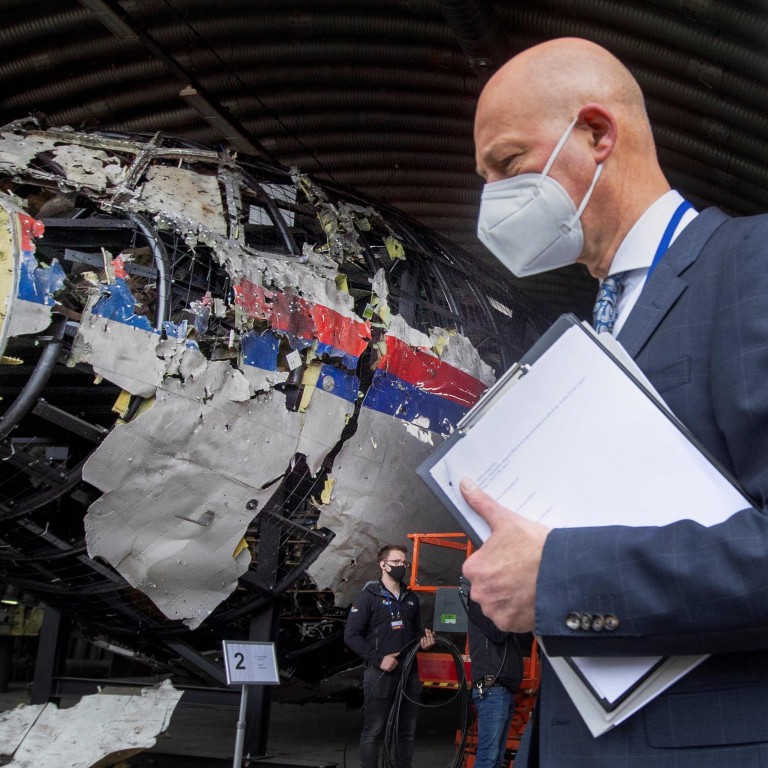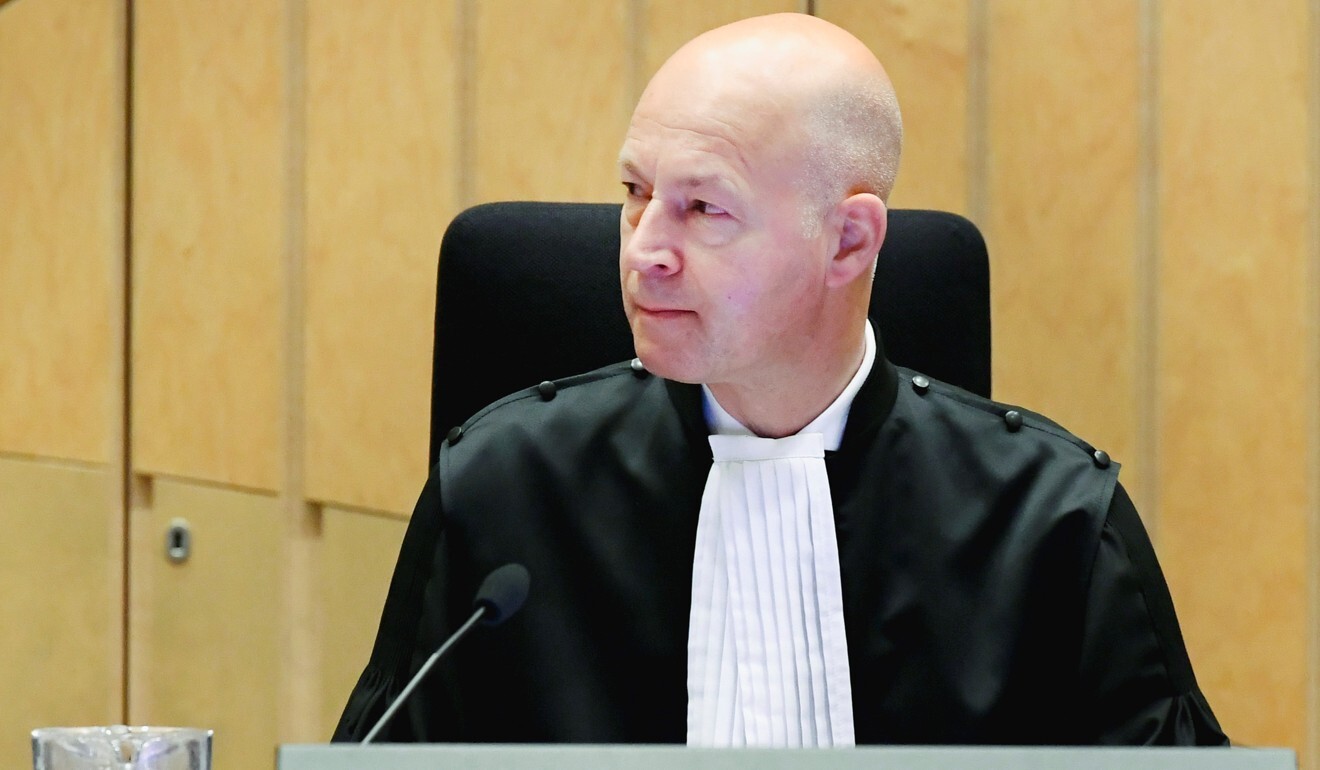
Malaysia Airlines flight MH17 trial to examine evidence, entering key phase
- The Malaysian plane was shot down over Ukraine in 2014, killing all 298 passengers on board, many of whom were Dutch
- The trial formally began in March 2020 but has until now dealt with legal arguments
Some relatives were in court for the start of a week in which judges will at last examine evidence against the three Russians and one Ukrainian, who are on trial in absentia over the July 2014 disaster.
The trial formally began in March 2020 but has until now dealt with legal arguments, mainly about the admissibility of evidence in the crash in which all 298 passengers and crew on the Boeing 777 were killed.
“Up until today no one has come forward and said they are even partially responsible for the crash of MH17,” presiding judge Hendrik Steenhuis told the court.
Russian suspect in downing of MH17 denies any involvement
Steenhuis said it was crucial for the evidence to be heard in open court despite the absence of Russian nationals Oleg Pulatov, Igor Girkin and Sergei Dubinsky, and Ukrainian citizen Leonid Kharchenko.
Only Pulatov has legal representation.
“The hearing being public is important to society in general, and to the relatives particularly, that there will be clarity about the result of the investigation after years of investigation,” the judge said.
Judges said the court will this week look at evidence about three key questions: whether the Boeing 777 was shot down by a Russian-made missile; the location the missile was fired from; and the role of the four suspects in the crash.
The idea that the plane had been downed by a BUK surface-to-air missile operated by pro-Russian separatists in eastern Ukraine was the “main scenario”, Steenhuis added, but they would also look at theories including that a plane had shot down MH17.
The court would be highlighting key parts of the evidence and not going over every part in court, he warned.
“The file consists of 65,000 pages, and many hundreds of hours of video and audio recordings. It’s such a large case it’s simply not possible to speak about every detail,” the judge said.
Australia, Netherlands slam Russia’s exit from MH17 crash talks
The prosecution and defence will have the chance to raise issues during hearings lasting until July 9. Relatives of the victims will be able to address the court in September.
The jet was travelling from Amsterdam’s Schiphol airport to Kuala Lumpur when it was shot down over part of eastern Ukraine controlled by pro-Russian rebels.
An international investigation concluded that a BUK missile that had originally come from the Russian army’s 53rd Anti-Aircraft Missile Brigade based in the city of Kursk was responsible.

All four suspects are accused of being key figures among the separatist rebels battling Kiev. Girkin, also known by his pseudonym “Strelkov”, is a former Russian spy and historical re-enactment fan who helped kick-start the war in Ukraine.
Dubinsky, who has also been tied to Russian intelligence, allegedly served as the separatists’ military intelligence chief while Pulatov was an ex-Russian special forces soldier and one of Dubinsky’s deputies.
Kharchenko allegedly led a separatist unit in eastern Ukraine.
MH17 trial: Dutch prosecutors claim Russia interfered with probe
Pulatov said in a video played to the court in November that he had seen no sign of any missile.
The trial is being held in the Netherlands, in a secure courtroom near Schiphol airport, because it was the point of departure for the doomed plane, and because 196 of the victims were Dutch.
The judges visited the reconstructed, shrapnel-pierced wreckage at a Dutch airbase for the first time in May in what they described as an “emotionally loaded” day.

.png?itok=arIb17P0)